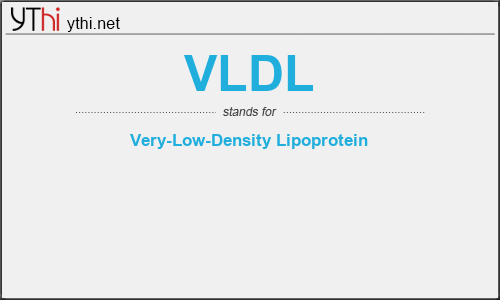What does VLDL mean? What is the full form of VLDL?
The full form of VLDL is Very-Low-Density Lipoprotein. It’s used on Medical ,Biochemistry in Worldwide
Cholesterol is a waxy, fat-like substance that’s found in all the cells in your body. Your liver makes cholesterol, and it is also in some foods, such as meat and dairy products. Your body needs some cholesterol to work properly. But having too much cholesterol in your blood raises your risk of coronary artery disease.
VLDL stands for very-low-density lipoprotein. Your liver makes VLDL and releases it into your bloodstream. The VLDL particles mainly carry triglycerides, another type of fat, to your tissues. VLDL is similar to LDL cholesterol, but LDL mainly carries cholesterol to your tissues instead of triglycerides.
VLDL and LDL are sometimes called “bad” cholesterols because they can contribute to the buildup of plaque in your arteries. This buildup is called atherosclerosis. The plaque that builds up is a sticky substance made up of fat, cholesterol, calcium, and other substances found in the blood. Over time, the plaque hardens and narrows your arteries. This limits the flow of oxygen-rich blood to your body. It can lead to coronary artery disease and other heart diseases.
There isn’t a way to directly measure your VLDL level. Instead, you will most likely get a blood test to measure your triglyceride level. The lab can use your triglyceride level to estimate what your VLDL level is. Your VLDL is about one-fifth of your triglyceride level. However, estimating your VLDL this way does not work if your triglyceride level is very high.
Your VLDL level should be less than 30 mg/dL (milligrams per deciliter). Anything higher than that puts you at risk for heart disease and stroke.
VLDL
means
Very-Low-Density Lipoprotein![]()
Translate Very-Low-Density Lipoprotein to other language.


Leave a Reply
You must be logged in to post a comment.